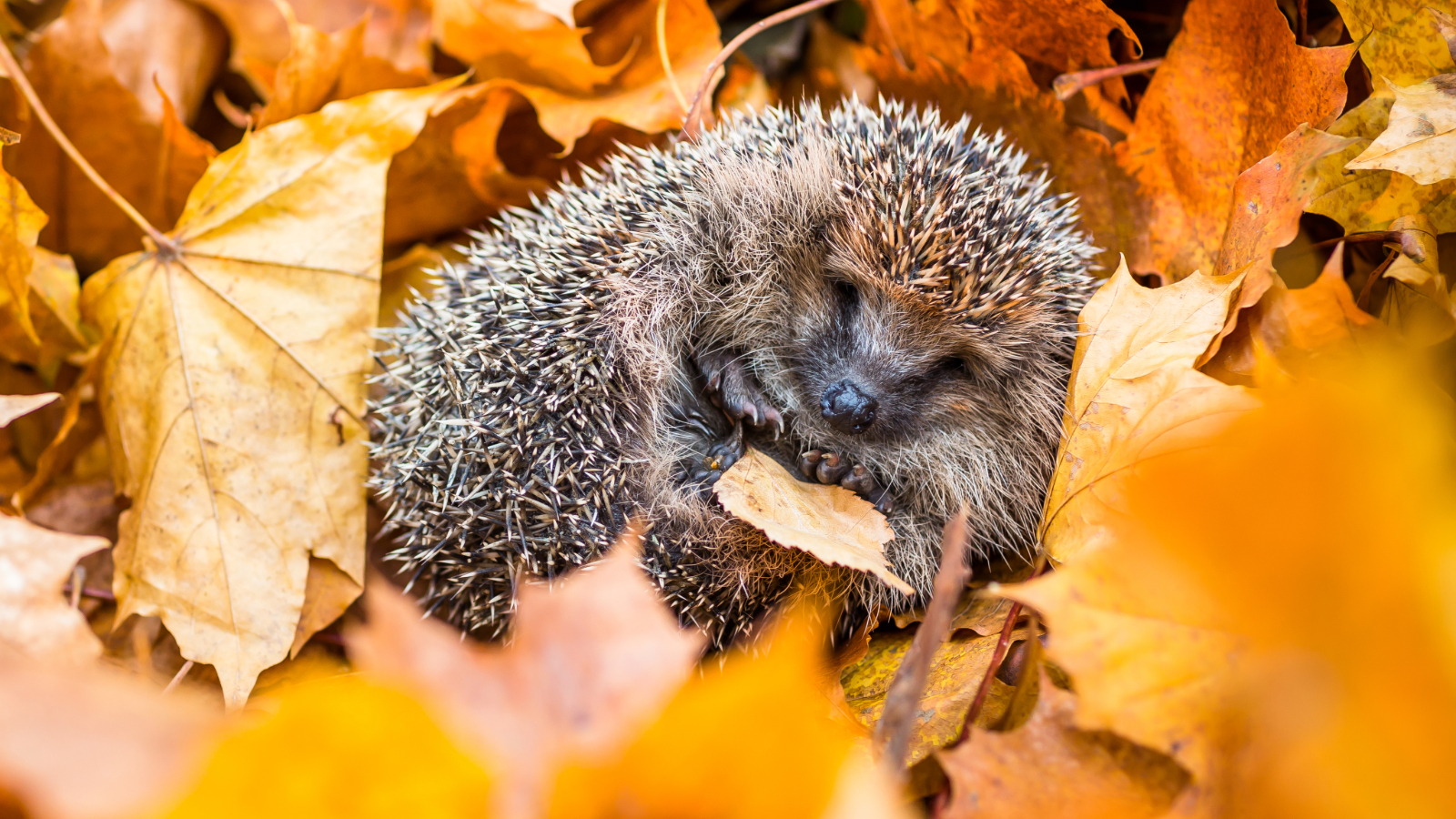8 key places to position garden lighting – because no one wants their outdoor space to be left in the dark
Discover where to position landscape lighting for a design that's both functional and adds atmosphere when the sun goes down

Knowing where to position landscape lighting allows you to dramatically enhance your outdoor space. Landscape lighting is a versatile tool you can use to showcase particular features you want to draw attention to, as well as being an easy way to give your outdoor space a professional-looking finish.
"Most gardens will benefit from some form of landscape lighting, whether for security, to discourage intruders, for access, to define steps and pathways, or for aesthetic effect," says garden designer Rosemary Alexander. "Lighting can dramatically enhance a garden at night, highlighting special features, such as a statue or tree, while allowing other features to recede."
As soon as your design plans are in place the next step is to consider where your key garden lighting ideas are needed. The decision is generally determined by considerations like access, security and enhancing the aesthetics, with different types of lighting suitable for different areas. That might sound complicated, but lighting your outdoor space is easier than you might think once you know the key areas to prioritise.
1. Entrances and doorways
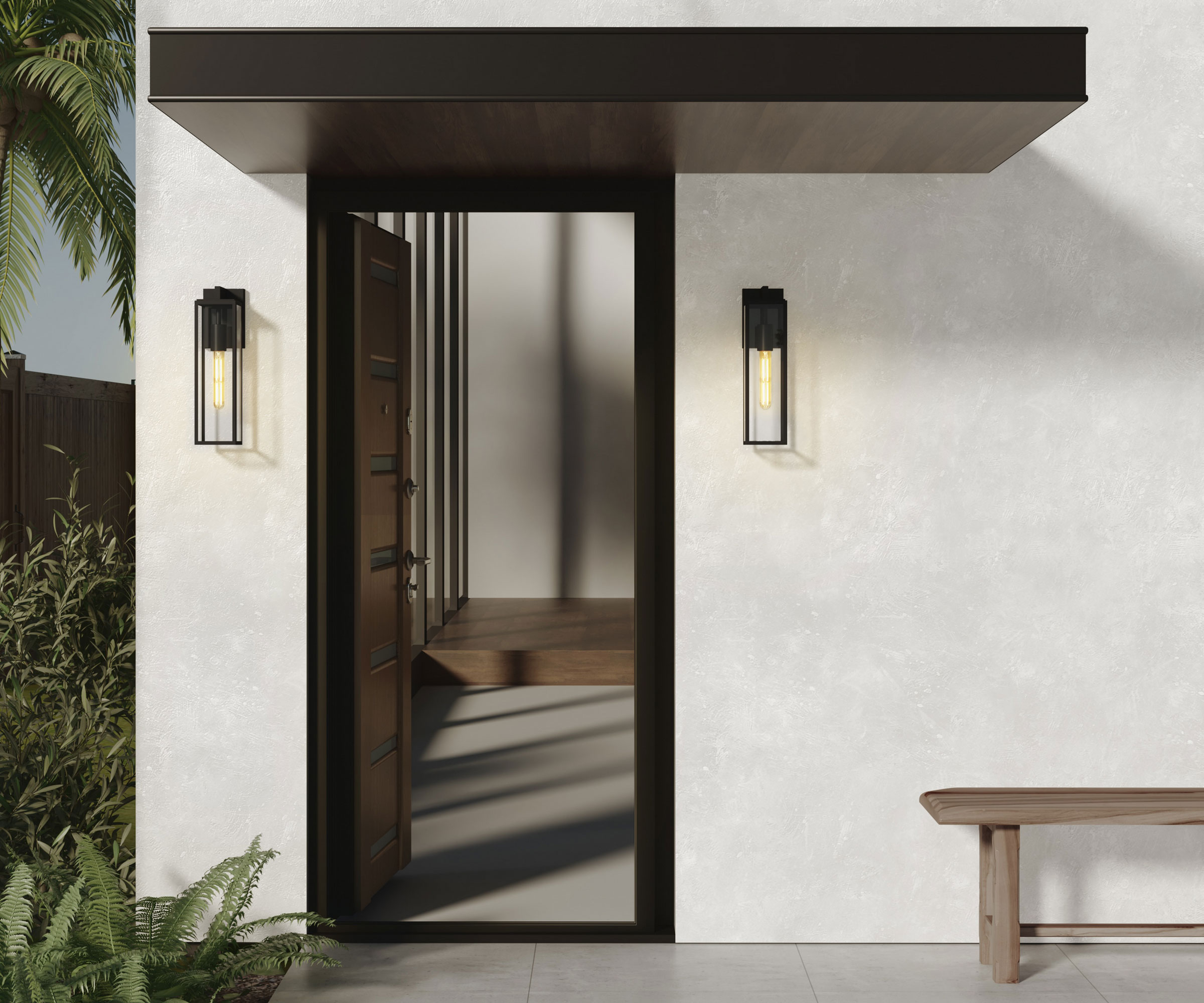
"You can improve your home’s kerb appeal simply by choosing the correct lighting for your porch," says lighting expert Julian Page. "Uplights and downlights on either side of your entryway offer a statement aesthetic, creating gorgeous pools of light that attract the eye. Finish the whole look off with a porch ceiling light or lantern to create a central focal point that really ties the symmetrical look together."
When it comes to porch lighting ideas a simple fixture beside a doorway is often sufficient for both security and ease of access. "Try to choose a fitting with clean simple lines in a style that is suitable for the architecture and locality, rather than opting for a utilitarian model," says Rosemary Alexander. "It may take time to find an appropriate fitting, but it's worth the effort as the wrong luminaire often spoils an otherwise carefully planned scheme."
Think about the positioning of the fitting too. It should be neither too high nor too low, and should not shine directly into the eyes of anyone approaching, advises Rosemary. Unless you need a great deal of light, a fairly low wattage or energy-saving bulb may be all that is necessary.
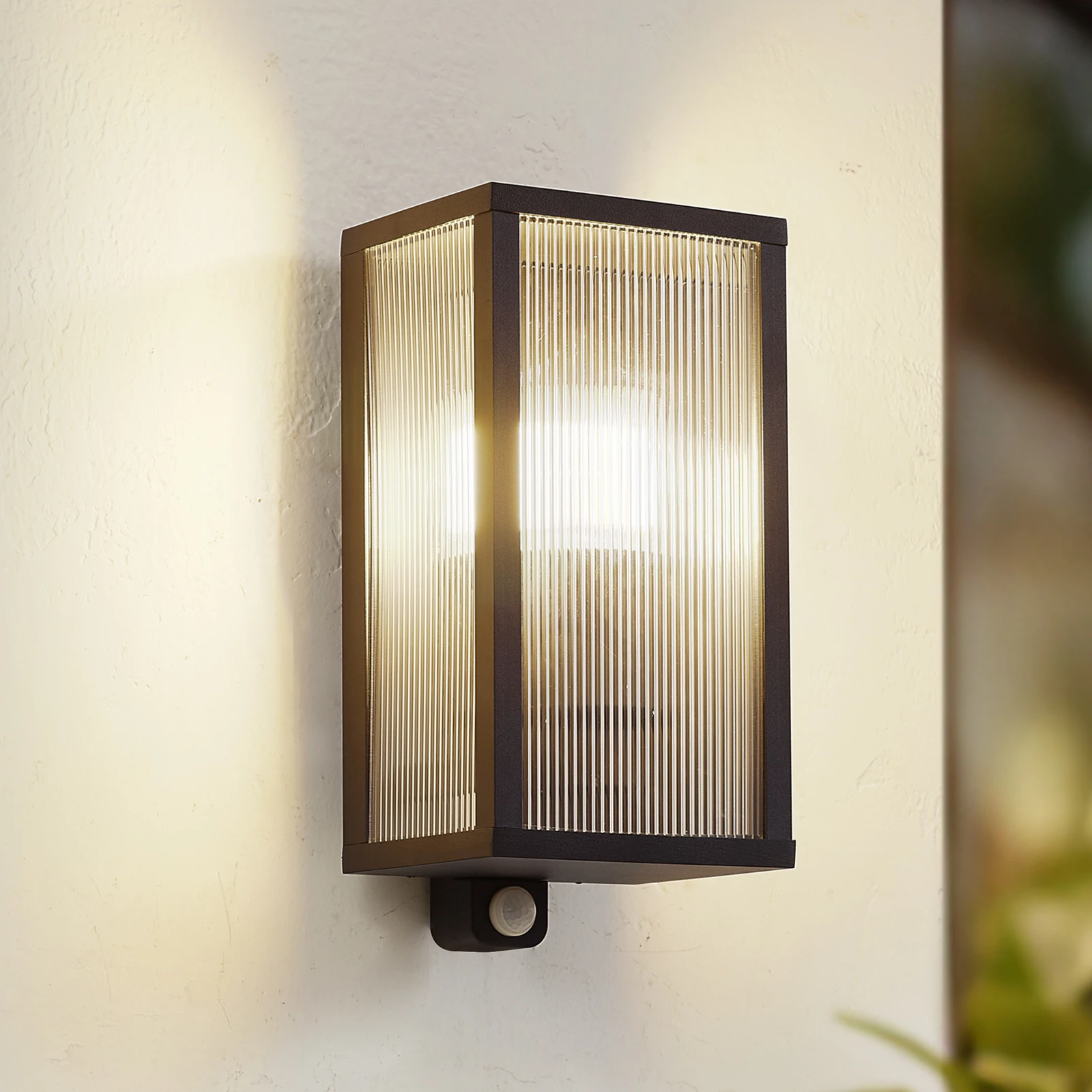
IP44 rated, this aluminium light with a reeded glass effect comes with a built-in motion sensor, making it a smart choice for the front of any home. The sensor can detect movement up to six metres away and the duration of the light can be adjusted from eight seconds to five minutes.
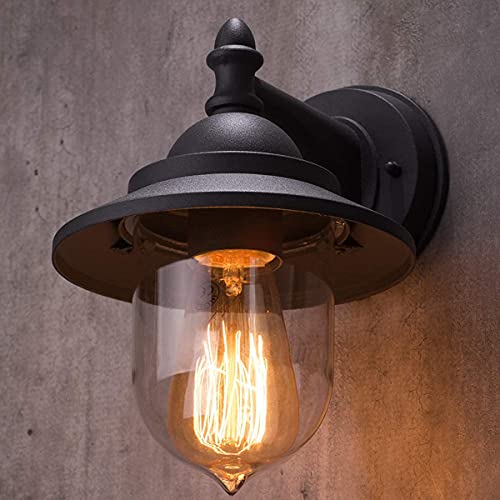
This classic lantern wall light is IP54 rated for outdoor use and comes ready assembled. It has a sturdy aluminium body and a clear polycarbonate diffuser to ensure maximum light diffusion. Perfect for both modern and traditional porches.
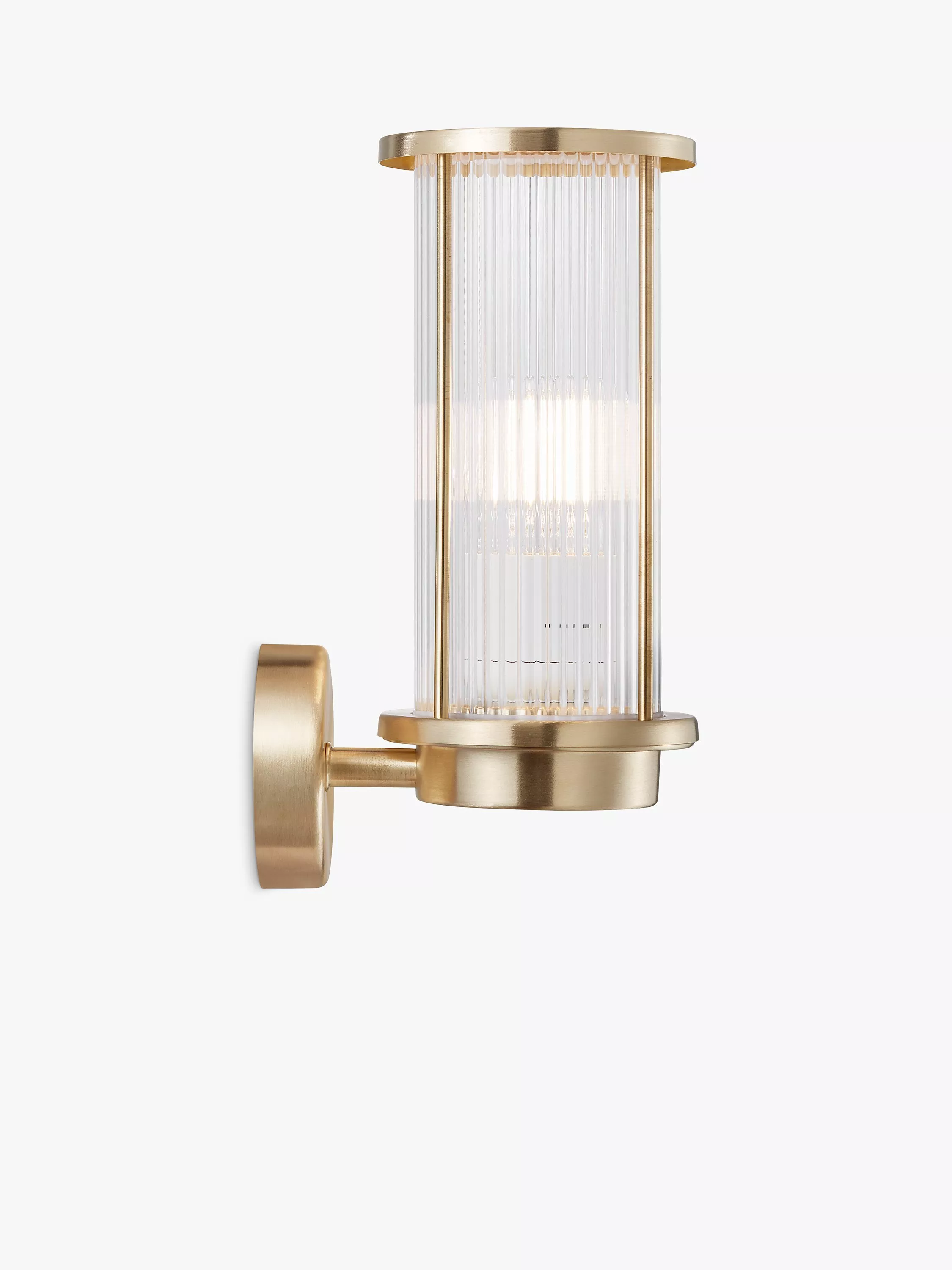
If black metal feels too heavy for your front porch, why not opt for this brushed brass design instead? The ribbed glass adds to the designer feel, while the brass will subtly darken over time. IP54 rated, it's also suitable for harsh coastal areas.

Julian Page has been head of design at BHS for 23 years. As a designer, it's important for Julian and his team to stay up-to-date on all the latest trends, therefore his detailed knowledge in all aspects of lighting and the lighting industry are instrumental in the success of the company.

Rosemary Alexander is founder and principal of the English Gardening School, a talented garden designer, and a skillful educator. In the UK, she is a trustee of the Great Dixter Charitable Trust and judges regularly for the RHS. She is well-known on the international lecture circuit.
2. Paths and steps
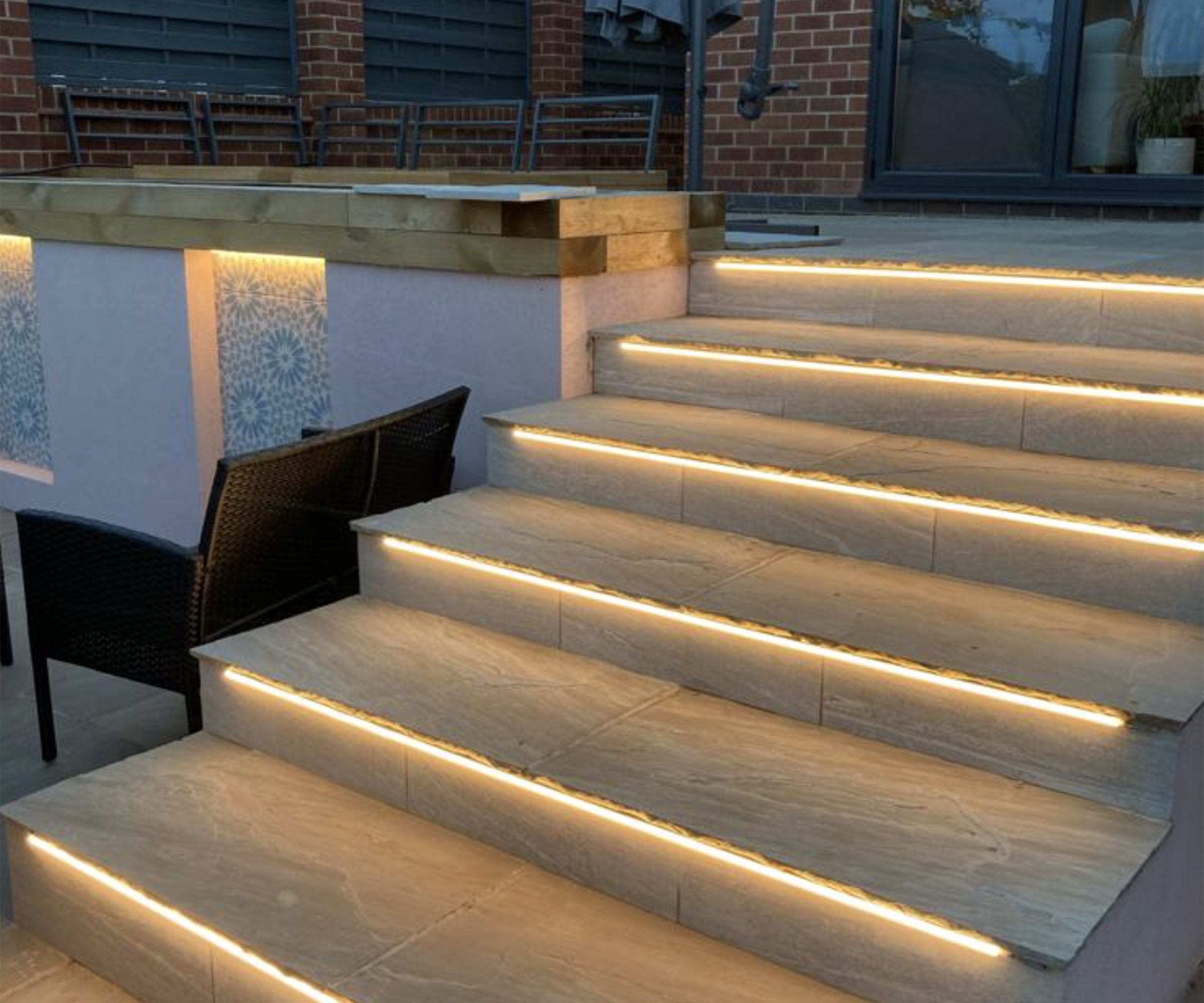
Focus on paths and garden steps ideas in particular when thinking about where to position garden lighting, and ensure regular routes that will be used during the hours of darkness are safely lit.
Bring your dream home to life with expert advice, how to guides and design inspiration. Sign up for our newsletter and get two free tickets to a Homebuilding & Renovating Show near you.
"For paths and steps, it's important to use low, directional lighting such as recessed step lights or small bollards, which clearly define the route and reduce the risk of tripping," advises lighting expert James Kendall.
"Step lighting is an important safety feature," says Rosemary Alexander. "This may include recessed fittings set in the supporting wall that throw a pool of light across the treads to illuminate the surface. The light source may be attached to the step riser or the tread itself, as for instance with LED strip lighting."

James Kendall is perfectly placed to offer expert guidance on all aspects of home and garden lighting. From dazzling crystal chandeliers and statement wall lights to designer lamps and elegant drop pendants, James and his knowledgeable team are always on hand to help customers find the perfect lighting for their individual project.
3. Patios and decks
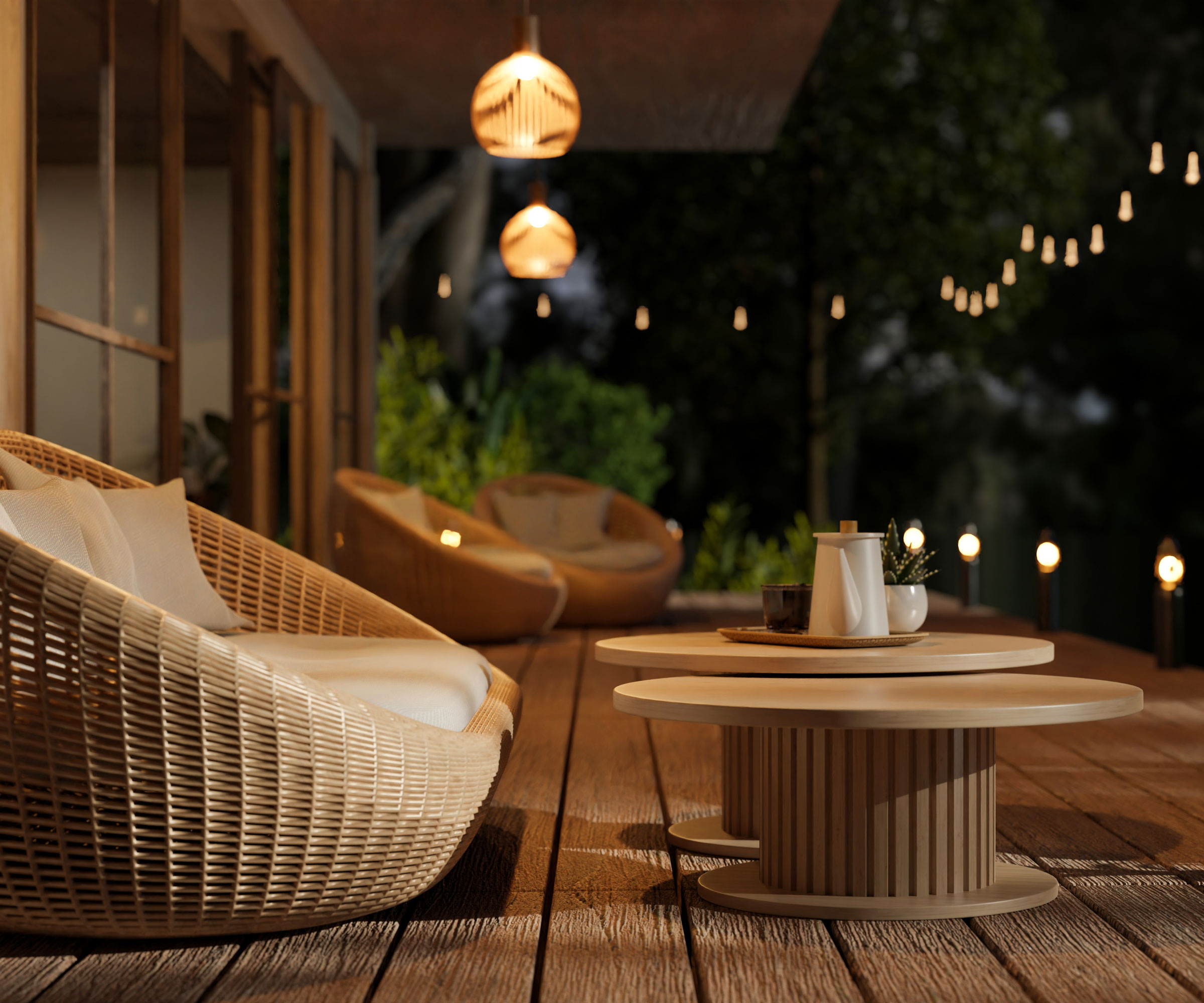
Patios and decking can be tricky areas to light so it's important to find out where to position landscape lighting. Layering is essential to get it right. "Too much light ruins the vibe, and too little makes the space unusable," says design expert Keely Smith. "I usually mix subtle uplighting at the corners with low-intensity downlights built into overhead structures."
"For both patio lighting and decking lighting make sure that you use IP44 minimum rated lighting to ensure water resistance against outdoor weather conditions," advises Julian Page. "Mountable floor spotlights that can be drilled into decking are a perfect choice for outdoor spaces. Combine these with surface wall washers that illuminate the ground around your decking for a sleek and modern look.'
As for patios you may want to opt for hanging lanterns like these gorgeous solar-powered ones from B&Q, as well as ceiling spotlights to illuminate your patio seating area. Layer in up and down wall lights too for extra warmth and ambience.

Keely Smith is the lead interior designer at JD Elite interiors. She has over 10 years' experience working with design studios, private companies, and as a freelance designer. Keely specialises in creating custom, client-centred spaces that blend functionality with timeless style.
4. Trees and shrubs
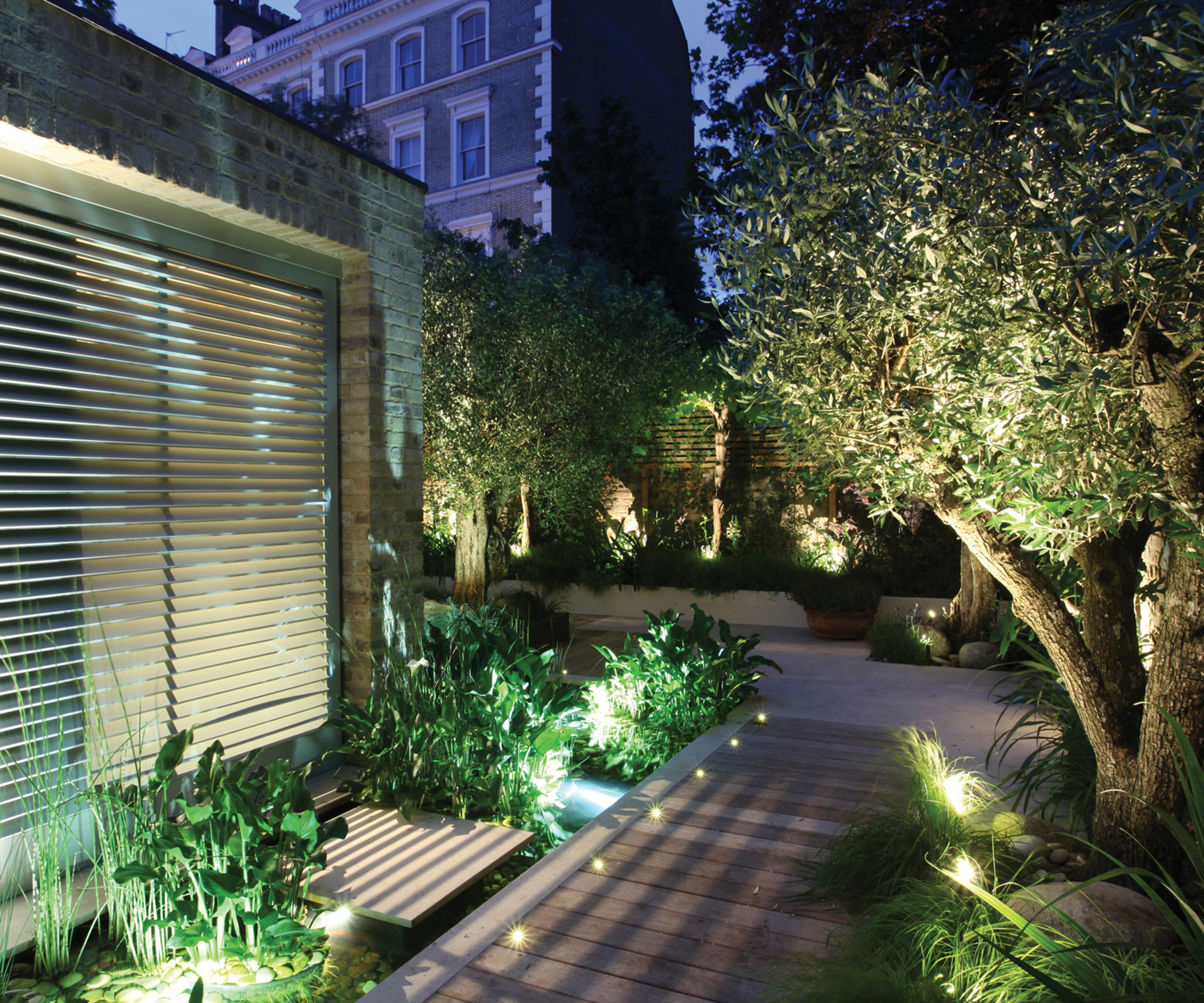
Lighting trees brings drama and scale to a garden. Try uplighting from the base to highlight the trunk and the spread of branches, which casts interesting shadows and adds depth. This works beautifully for varieties of tree like olive or Japanese maples.
"Another idea is to place a fixture high in the tree, facing down, so it casts gentle light through the branches," suggests Keely Smith. "This is known as 'moonlighting', and gives off a calm, dappled effect that feels natural and soft." This is a great way to make garden lighting look expensive as it adds a high-end feel.
"For shrubs and plants, use small ground-level spotlights that gently bring out form and texture without overpowering the space," says James Kendall. Moveable spotlights like these stylish black ones on spikes from B&Q are highly versatile and can be placed exactly where you need them in the garden.
5. Garden structures

"The right lighting can transform even simple pergola ideas into a magical retreat after dark," says pergola expert John Foster. "Start by considering how you want to use the space, whether for dining, relaxing, or entertaining, then layer your lighting accordingly."
Some pergola designs come with built-in lighting but it's a good idea to add additional accent lighting such as festoon lights, lanterns, or low-level spotlights to help create a more personalised and inviting ambience, especially for evening gatherings or quiet nights under the stars. Choose weatherproof, dimmable options for flexibility and longevity.
John also suggests installing small, warm LED down-lights in the beams to provide general illumination as part of your pergola roof ideas. For a more atmospheric effect, position the lights so they highlight climbing plants or cast gentle shadows.
"With pergola lighting, less is often more," says John. "Avoid flooding the area with bright lights. Instead focus on creating pools of light and pockets of shadow for a natural, inviting atmosphere. Overlighting can wash out the beauty of timber and planting, and detract from the relaxing vibe."
If your pergola is attached to a studio or garden room, why not include some garden room lighting ideas too for a seamless link.
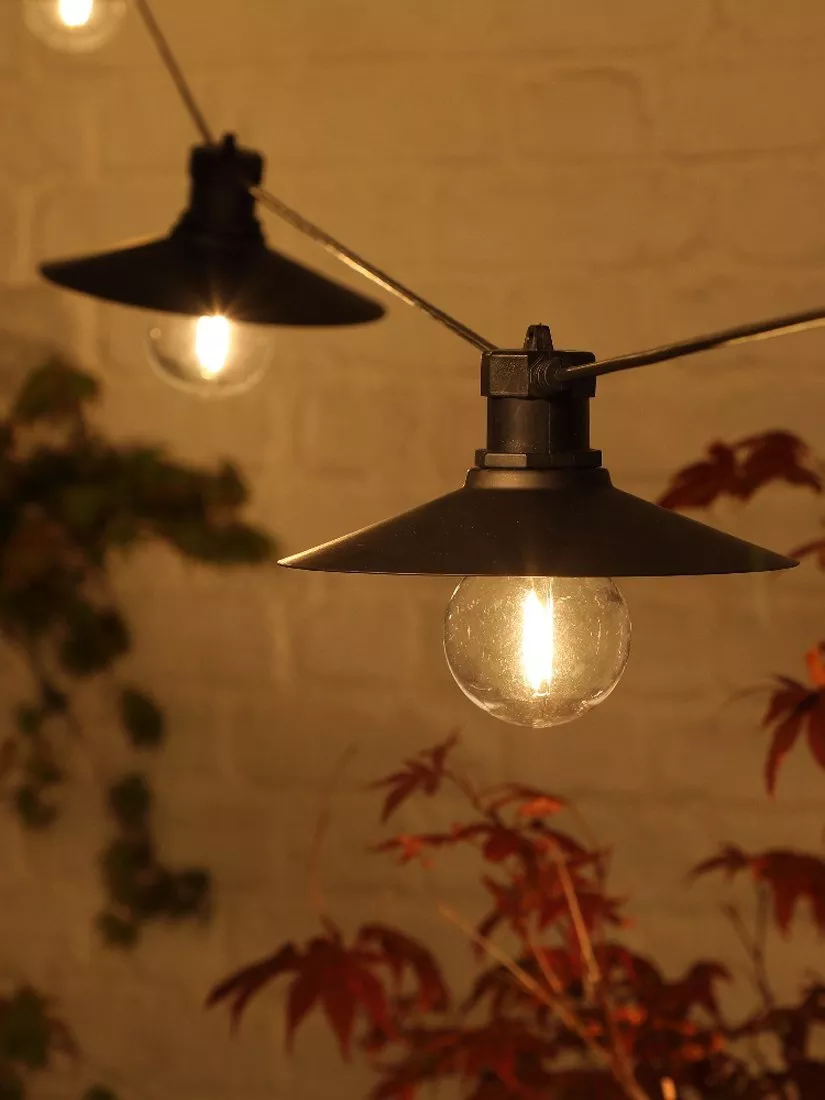
Mains-powered, these oversized festoon lights offer something a little different to more traditional designs. There are six lights on each set, but you can connect up to 10 sets from one power source allowing you to stretch them around the edge of your pergola and further into the garden.
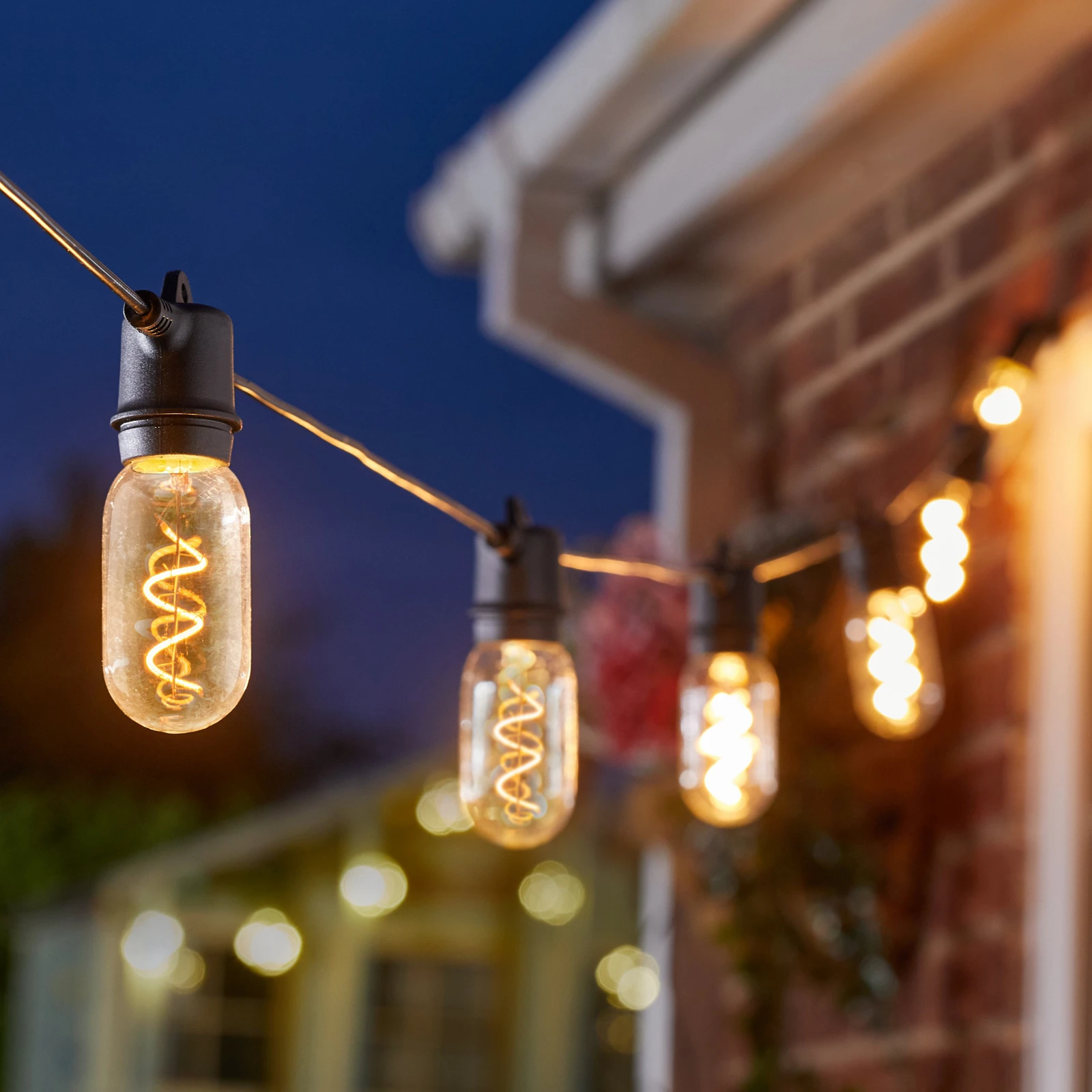
If you want to string lights from your pergola but don't have access to a power supply, these solar festoon lights are a stylish solution. Featuring eight glass globes with warm white LEDs, there's a 50cm space between each light. Stylish, practical and good value at £35. What's not to like?
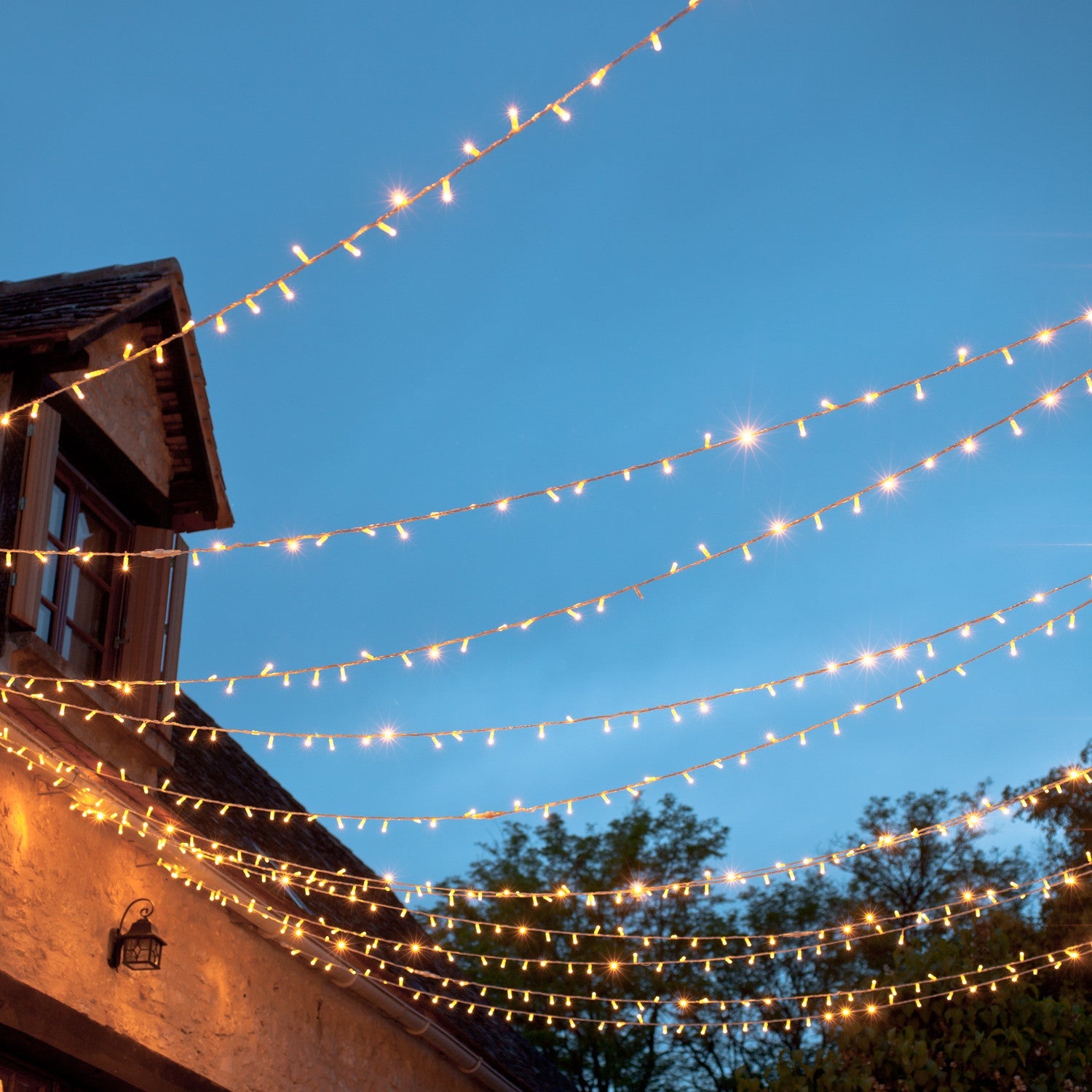
Whether you want to hang them from your pergola, stretch them across a patio or illuminate walls or fences, you can't go wrong with a set of outdoor fairy lights. These cost just £25 for 100 lights on 10m of cable and they can be connected to other sets for up to 80m of lights in total.

John Foster oversees the national installation team for Hillarys. With a construction background and specialist product knowledge, John has a hands-on approach, dismantling each product down to component level and rebuilding it to truly understand how every part functions.
6. Pools and water features

Underwater lighting can really help to bring a swimming pool, water garden or pond to life at night. Lighting also helps make the pool more visible and therefore safer to walk around in the dark. It also elevates even the most ordinary water feature to a sophisticated installation.
"In a still pool, backed by a wall, the flickering shadows cast by the movement of fish can animate the garden in a way that would be impossible during the day," says Rosemary Alexander.
"Underwater lighting is also effective for highlighting fountains and waterfalls, especially when used in conjunction with spotlights. Obviously, any luminaires that are installed underwater must be waterproof and fit for purpose."
7. Driveway
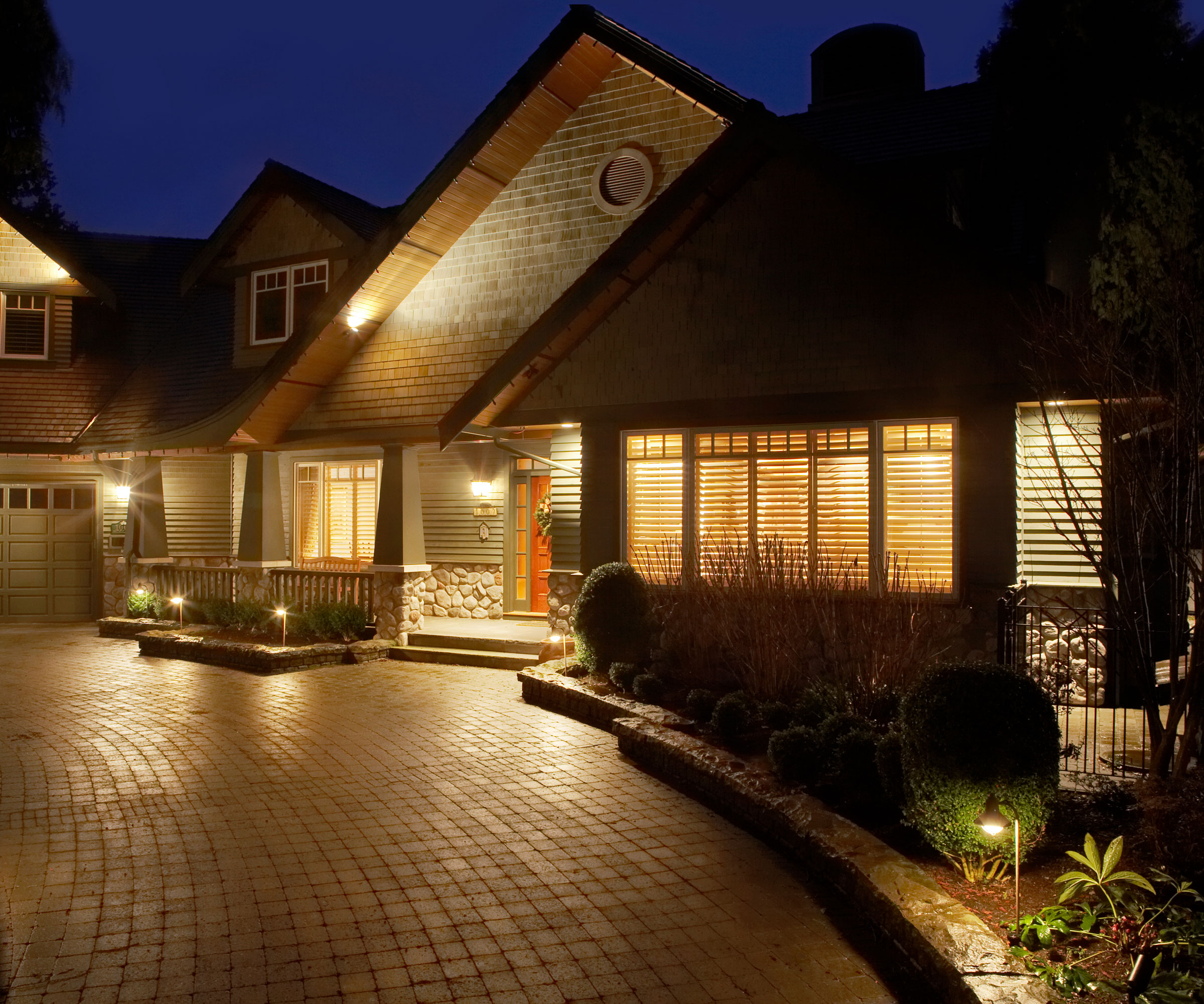
"When using your driveway in the evenings, it can be often be difficult to park your car due to the lack of natural light. The perfect solution for increased visibility is to install driveway lights," says Julian Page.
Illuminating your front garden with driveway lighting ideas is not only practical but is sure to wow any guests that visit your home. "For a symmetrical, modern style I recommend spike or bollard lights as they're ideal for lining the sides of the driveway for an even spread of light," says Julian. Try these brushed stainless steel driveway bollard lights from Amazon, which are both sturdy and stylish.
For the best coverage, Julian advises opting for powerful, PIR floodlights, which use sensors to detect motion as your car pulls up the driveway, automatically triggering the light to assist you with parking.
"You can also consider dusk ‘til dawn lights, that conveniently provide light without pressing a button, using photocell sensors that detect natural light levels and switch on accordingly."
8. Balcony
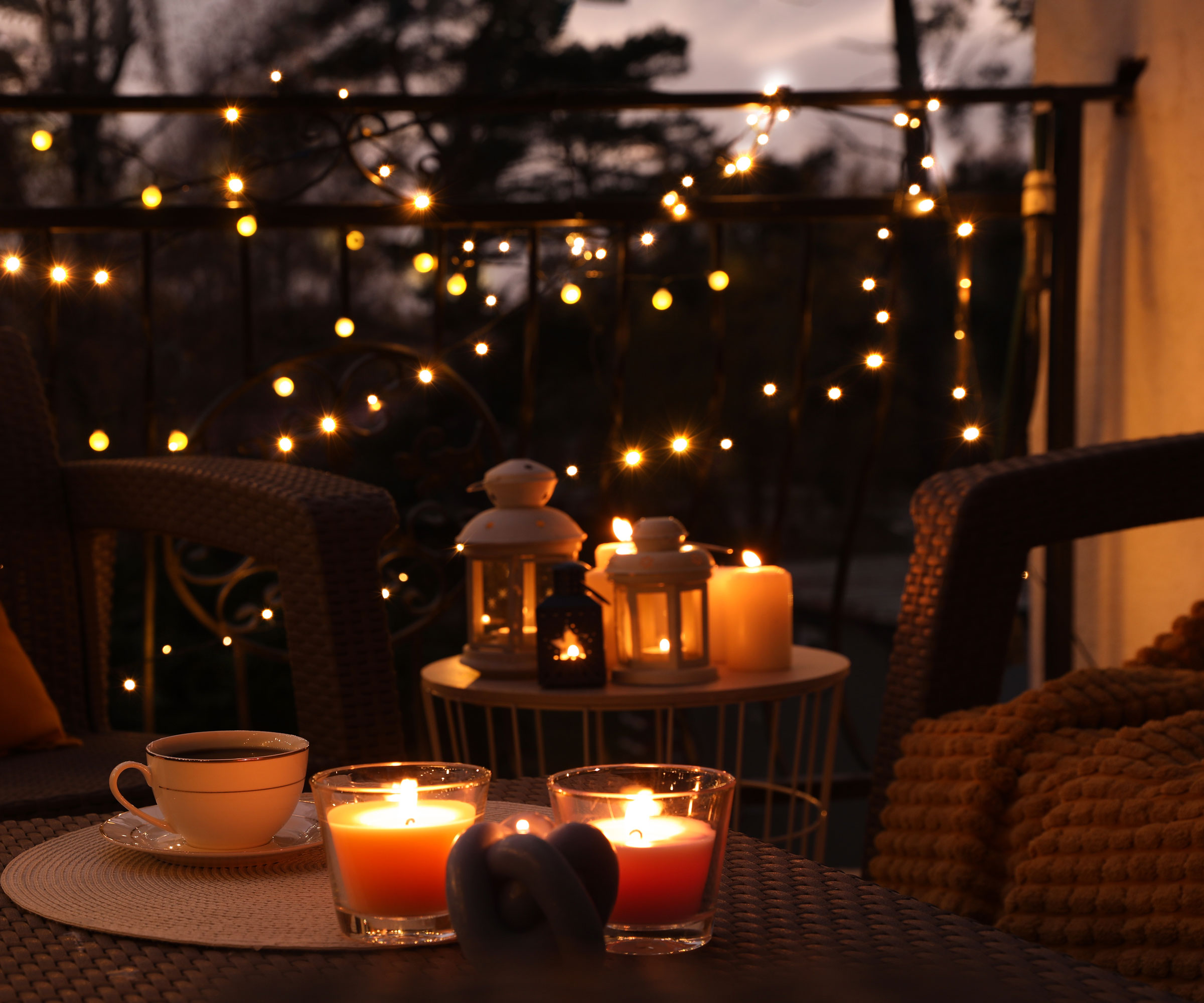
When lighting a balcony, it's a great opportunity to gather together as many lanterns, candles and portable lamps as there's room for. Balconies are made for festoon lights too. Meanwhile fixing outdoor wall lights on either side of the entryway leading out onto the balcony gives a symmetrical and balanced appearance to your balcony ideas.
"Alternatively, if you're renting so are unable to wire new lights outdoors, you could always opt for solar-powered lighting, or perhaps a rechargeable outdoor table lamp or lantern, ensuring that it is waterproof for resistance against outdoor weather conditions," suggests Julian Page.
“One of the many benefits of portable lighting is that it can elevate everyday moments, adding a decorative touch and soft glow wherever you need it," says lighting designer Tom Raffield. "In the summer months, the versatility of portable lighting truly shines."
Try using Tom's stylish Skipper Portable Table Light as an eye-catching centrepiece to a tablescape, to light to a small bistro table or introduce two or more to a long dining table, creating both height, texture, and practical low-level ambient light.
FAQs
Can you overdo landscape lighting?
"Yes you can overdo landscape lighting," says lighting expert Jamie Moxey, lighting expert at Dusk Lighting. "If you flood an outdoor space with too much light it comes across as brash and clinical, detracting from any feature pieces you may otherwise want to highlight.
"When correctly placed, landscape lighting should add welcoming ambience. As with many design briefs it's a case of less is more. You don’t want the area to feel like you're lighting it for a rave, and too much bright lighting can also disturb neighbours."
It's a good idea to check out the law on garden lighting to avoid fines and conflicts.
A well-lit garden should feel calm and atmospheric rather than overly bright or cluttered with fixtures. "Focusing on a few key features and using warm white light will create the most inviting effect," says James Kendall, operations director at KES Lighting & Home. "Incorporating dimmers or smart controls also offers flexibility, and helps avoid overwhelming the space."
Even though you now know where to position landscape lighting, it's worth getting up to speed on the most common garden lighting mistakes to make sure you don't slip up.
Get this part of your garden design right, however, and you'll soon get to enjoy a beautiful outlook throughout the day and night.

Lifestyle journalist Sarah Wilson writes about garden design and landscaping trends. She has studied introductory garden and landscape design, and also has an RHS Level 2 qualification in the Principles of Plant Growth and Development. Sarah is a regular contributor to Homes & Gardens and Livingetc, and has also written for Modern Gardens, Country Living, and Country Homes & Interiors magazines.
